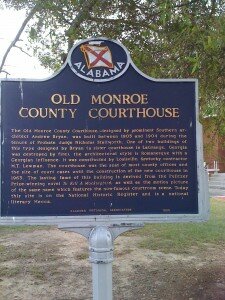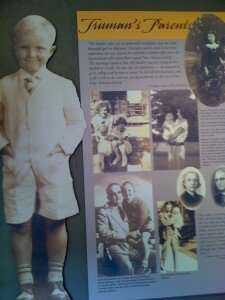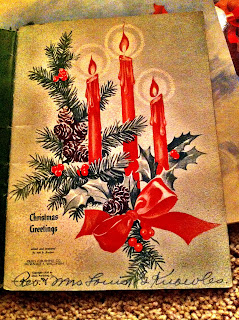I am a reader and book evangelist. For many years I have kept a reading journal with little descriptions of the books I read and dates I read them. Kind of a trail of book bread crumbs that chart my interests over a given course of time. This blog gives me a way to continue my journal and share my reading interests with others. My latest adventures in creating, dining, and traveling can be found at my website LindasOtherLife.com
Friday, December 28, 2012
Sweet Tooth by Ian McEwan
Thursday, December 27, 2012
A Christmas Memory by Truman Capote
Everyone has a favorite Christmas story, and mine begins “Imagine a morning in late November. A coming of winter morning more than twenty years ago.” The story is A Christmas Memory by Truman Capote, originally published in Mademoiselle
magazine in December 1956. Autobiographical and bitter-sweet, the tale
is narrated by a seven-year-old and tell of his oddly childlike older
cousin with whom he bakes and delivers fruitcakes every Christmas. The
beginning of the story recounts the complicated procedure of collecting
pecans and purchasing ingredients – even a visit to a Native American
bootlegger named Ha Ha Jones who sells them the requisite whiskey. As
they work together, they discuss the possible recipients of this year’s
fruitcakes – neighbors as well as people, like President Franklin Delano
Roosevelt, who they have never met. The general sense is that the bond
between Buddy, the boy, and Sookie, the much elder cousin, is special.
When they separate after the cakes are made, to fashion gifts for each
other, the simple joy and frustration of Christmas gift giving is
beautifully articulated – It’s bad enough in life to do without
something YOU want; but confound it, what gets my goat is not being able
to give somebody something you want THEM to have.
In my early days as an English teacher, my “gift” to my students was a reading of A Christmas Memory. I believe I began reading the story to tenth graders because it was included in their Anthology of American Literature textbook. I would choose a day close to the holiday break, turn on some appropriate instrumental background music, and invite them to read along in the text, or simply sit quietly and listen. I hung a little “Reading in Progress – Do Not Disturb” sign on the door handle and for about 40 minutes, I would read and they would listen – enthralled by the beauty of the story. I’m not just stroking my ego – I know they were enthralled.
The two relatives make kites for each other, and take them out to a field to fly them on Christmas day. Against the background of the winter sky, Buddy listens to one of the most poignant reflections on life and death I have ever read – My, how foolish I am! You know what I’ve always thought? I’ve always thought a body would have to be sick and dying before they saw the Lord. And I imagined that when He came it would be like looking at the Baptist window: pretty as colored glass with the sun pouring through, such a shine you don’t know it’s getting dark. And it’s been a comfort: to think of that shine taking away all the spooky feeling. But I’ll wager it never happens. I’ll wager at the very end a body realizes the Lord has already shown Himself. That things as they are, just what they’ve always seen, was seeing Him. As for me, I could leave the world with today in my eyes.I would finish reading, and look up at the class and see smiles of understanding and, more often, eyes filled with tears. There were a few years that graduates returned to my classroom on their first Christmas break, just to hear the story again. The story is that moving.
But what moves me to write this reflection is my understanding of how much students, and their capacity for story, changed over the course of my thirty years in the classroom. I don’t remember when I stopped this personal Christmas tradition. At some point I realized that sustained silent listening is as rare as a good Christmas fruitcake these days. Contemporary students, with cell phones in their pockets and instant gratification monitors finely calibrated, would rather have a candy cane or day off to watch National Lampoon’s Christmas Vacation as a holiday classroom treat. I know one year – somewhat recently – I read A Christmas Memory instead having my AP students write their previously scheduled in-class Hamlet essays, and they seemed moved to tears of joy and relief. The story is still included in our tenth grade anthology, but I don’t know of any of my former colleague who still read it with their students.
The story may be more dear to me since our visit to Monroeville, Alabama a few summers ago. Truman Capote and Harper Lee shared their childhoods in Monroe, and it is fictionalized as Maycomb in Lee’s To Kill a Mockingbird.
Writing Self Portrait in 1972, Capote said, As
a child, I lived until I was ten or so with an elderly spinster
relative in a rural, remote part of Alabama. Miss Sook Faulk. She
herself was not more than twelve years old mentally, which is what
accounted for her purity, timidity, her strange, unexpected wisdom. He wrote two stories about Sook: A Christmas Memory and The Thanksgiving Visitor.
A Christmas Memory is worth reading once a holiday season. It remains my favorite Christmas story.
In my early days as an English teacher, my “gift” to my students was a reading of A Christmas Memory. I believe I began reading the story to tenth graders because it was included in their Anthology of American Literature textbook. I would choose a day close to the holiday break, turn on some appropriate instrumental background music, and invite them to read along in the text, or simply sit quietly and listen. I hung a little “Reading in Progress – Do Not Disturb” sign on the door handle and for about 40 minutes, I would read and they would listen – enthralled by the beauty of the story. I’m not just stroking my ego – I know they were enthralled.
The two relatives make kites for each other, and take them out to a field to fly them on Christmas day. Against the background of the winter sky, Buddy listens to one of the most poignant reflections on life and death I have ever read – My, how foolish I am! You know what I’ve always thought? I’ve always thought a body would have to be sick and dying before they saw the Lord. And I imagined that when He came it would be like looking at the Baptist window: pretty as colored glass with the sun pouring through, such a shine you don’t know it’s getting dark. And it’s been a comfort: to think of that shine taking away all the spooky feeling. But I’ll wager it never happens. I’ll wager at the very end a body realizes the Lord has already shown Himself. That things as they are, just what they’ve always seen, was seeing Him. As for me, I could leave the world with today in my eyes.I would finish reading, and look up at the class and see smiles of understanding and, more often, eyes filled with tears. There were a few years that graduates returned to my classroom on their first Christmas break, just to hear the story again. The story is that moving.
But what moves me to write this reflection is my understanding of how much students, and their capacity for story, changed over the course of my thirty years in the classroom. I don’t remember when I stopped this personal Christmas tradition. At some point I realized that sustained silent listening is as rare as a good Christmas fruitcake these days. Contemporary students, with cell phones in their pockets and instant gratification monitors finely calibrated, would rather have a candy cane or day off to watch National Lampoon’s Christmas Vacation as a holiday classroom treat. I know one year – somewhat recently – I read A Christmas Memory instead having my AP students write their previously scheduled in-class Hamlet essays, and they seemed moved to tears of joy and relief. The story is still included in our tenth grade anthology, but I don’t know of any of my former colleague who still read it with their students.
The story may be more dear to me since our visit to Monroeville, Alabama a few summers ago. Truman Capote and Harper Lee shared their childhoods in Monroe, and it is fictionalized as Maycomb in Lee’s To Kill a Mockingbird.
A Christmas Memory is worth reading once a holiday season. It remains my favorite Christmas story.
Friday, December 14, 2012
Holiday Reading Memories
On Pinterest, every idea is a new idea worth sharing. I can skip over the home remedies that aren’t as new as tried and true, but when I saw this idea being repinned with comments like “Great idea for when I have little ones”, I decided to go public. When my daughter was in second grade, I got the idea to wrap up all of the Christmas children’s books in the house and put them in a big wicker laundry basket on the hearth to open and read one with her each night at bedtime from Thanksgiving to Christmas.
She LOVED it. It became a tradition that continued through middle school. When she was little, I saw it as a good way to hurry bedtime. Many nights she begged to unwrap a book before she was bathed and dressed in her pjs, and the answer was always that she had to be ready for bed before we could read. Of course, my ulterior motive was to encourage reading. Always to encourage reading! Even though both of my kids still seldom read for pleasure, it isn’t because they didn’t grow up surrounded by books. The book-a-night Christmas tradition could begin at a very young age. I remember one of the first Christmas books that my kids begged for night after night was Carl’s Christmas. They adored all of the Carl books by Alexandra Day, and I liked the creative story telling they encouraged.
Each year, I would buy a few new books to swell the pile and wrap them along with the old. I swear my daughter could snoop out the new books by feel. And certain traditional books were obviously shaped. Chris Van Allsburg’s Polar Express was a long rectangle and easily selected. Certain books, including The Polar Express, were favorites and, therefore, saved for later in the season.
Another favorite was Yes, Virginia There is a Santa Claus – this one is clearly marked “The Classic Version” by Francis P. Church. Rereading these favorites strengthened our Christmas spirit. Once the Christmas tree – always real in this house – was up and lit, the bedtime reading would move from the bedroom to the family room in front of the tree.
As she got older, I suggested each year that perhaps it was time to just put the books in a basket unwrapped, but she pleaded with me – “not this year – not yet“. So I tried to find less juvenile reading selections. I always relished a trip to the book store (Yes, Virginia! We had book stores) and I found humor in Santa Cows and How Murray’s Saved Christmas. Santa Cows was one that I would also take in to school to read to my classes, working it in as a fine example of a parody – both of ‘Twas the Night Before Christmas and Field of Dreams!
Part of the magic of this yearly tradition is giving a child a chance to open a present of literature. The unwrapping is physical, but the savoring of each story is intrinsically valuable. One of the books I included is the only childhood Christmas book that I remember reading over and over again – with the exception of ‘Twas the Night Before Christmas. It is a little book of poems, stories and songs published by Ideals.
Even tonight, when I open the shiny cover, I discover poems I can still
repeat by heart. It looks like the book has a 1958 copyright, and the
inked inscription suggests it was a gift from the preacher to my
parents, but that book is as dear to me as any Christmas memory.
recently drove to my daughter’s college to take her out to dinner with a few of her new friends, and the subject of Christmas traditions came up. She described – with glee – the book-a-night Christmas tradition, and tried her best to make her friends jealous. She will return from her first semester away at college this weekend, and the deeply nostalgic, Chrismas-loving part of me wants to hurry up and wrap the books. They are all in a box on a closet shelf these days, stored but not buried away like some vestiges of my children’s childhoods.
This Christmas, I sit in a family room lit by the lights on another real tree, in a house strangely devoid of the sounds and energy of kids. I don’t know if Pinterest is the right platform for spreading the word – but if it is, then spread it. Read with your kids! Start a tradition that will keep them talking for the rest of their lives. This idea is inexpensive, but I guarantee you and your children will be rich in memories for years to come.
Wednesday, December 05, 2012
15,000 Page Views!
A little blog that began as a simple way to remember what I had been reading has reached 15,000 page views. I'm pretty tickled. Thank you to all my readers and I certainly hope I continue to provide some guidance about books.
I was thrilled to see that I had read seven of the novels included in the New York Times list of 100 Notable Books of 2012. Included in the list is Shine, Shine, Shine which I wrote about back in the summer beginning with my claim "This is it". It would make a great Christmas gift book for the reader on your shopping list.
I was thrilled to see that I had read seven of the novels included in the New York Times list of 100 Notable Books of 2012. Included in the list is Shine, Shine, Shine which I wrote about back in the summer beginning with my claim "This is it". It would make a great Christmas gift book for the reader on your shopping list.
Monday, December 03, 2012
Flight Behavior by Barbara Kingsolver
I have long been a Barbara Kingsolver fan and waited patiently to get my copy of her new book from the library. I am still trying to be really, really good about not bringing more books into the house since the stack of boxes we brought home from school are a standing reminder of our addiction. I avoided reading much of any review of the book and was very glad I didn't know the specific subject through the first two chapters - so I won't spoil the surprise for my readers in case you want to experience the anticipation that I felt while reading. Simply put, Kingsolver takes on global warming in this expertly crafted - and very readable - novel set in her own Appalachian territory. I say readable, because this is a book I would recommend to students and friends alike. Kingsolver uses colloquial vernacular, contemporary cultural references - Facebook, text messages and viral videos - to cement her connection with a wide range of readers. Dellarobia is a bright but dissatisfied mother and housewife when she witnesses a spectacle in the hills around her home. Her husband, Cub, and domineering in-laws, Hester and Bear, are forced to reckon with attention when the unnatural phenomenon brings scientists, protestors and casual gawkers to their property. The novel seamlessly weaves religious, agro-environmental, educational, and philosophical issues. The essential debate of the novel occurs in one of the final chapters when a stereotypic media talking head shoves a camera in the face of Ovid Byron, an expert research scientist, and tries to spin what he deems a crisis into a story of uncommon beauty.
P.S. For all my former students reading this - There are several sentences in this book I would be reading aloud to you today, especially the one where she assumes her preacher took honors English in high school because he seems to "know the difference between Homer's Ulysses and the one by James Joyce, and how to get down to business with a metaphor". I loved her minor character, Mrs. Lake the Honors English teacher, even though Kingsolver made her "about a hundred years old" and most likely "dead by now." Ha!
Subscribe to:
Comments (Atom)














